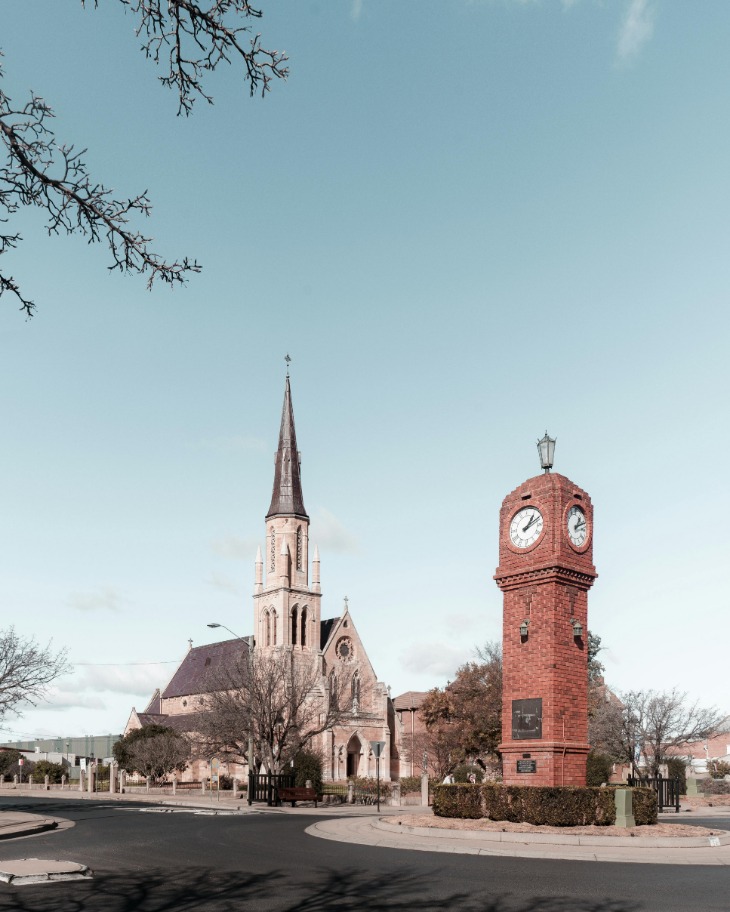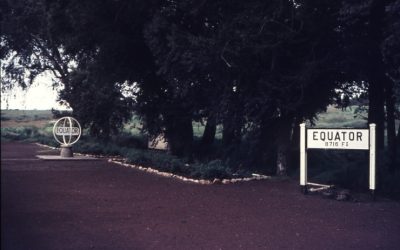Climatic Overview of Kenya
Kenya’s climatic overview reveals a diverse and vibrant environment that offers a variety of experiences throughout the year. The country enjoys a range of weather patterns influenced by its geography, from the humid coastal regions to the arid northern territories and the lush highlands. Understanding these climate variations is essential for determining the best time to visit Kenya and make the most of its impressive wildlife, landscapes, and cultural sites.
Equatorial Climate and Variations
The best time to visit Kenya depends largely on the climatic conditions and the type of experience you seek. Kenya generally experiences a variety of climatic conditions, with the most prominent being the equatorial climate, which influences weather patterns across the country.
Kenya’s equatorial climate results in warm temperatures throughout the year, with little variation between seasons. This climate is characterized by high humidity and consistent temperatures, typically ranging from 20°C to 30°C (68°F to 86°F). The country experiences two main rainy seasons: the long rains from March to May and the short rains from October to December, which can affect travel plans, especially for safaris and outdoor activities.
Variations in climate are evident across different regions. The coastal area is hot and humid, with temperatures often exceeding 30°C (86°F), while the highland areas, including Nairobi and central Kenya, have cooler temperatures due to their elevation. The northern parts of Kenya are arid and receive little rainfall, making them suitable for certain dry-season activities.
For optimal wildlife viewing and outdoor adventures, the dry seasons—June to October and January to February—are generally considered the best times to visit. These periods offer clear skies and minimal rainfall, which are ideal for safaris, especially during the migration seasons in the Maasai Mara. Visiting during these months allows tourists to experience Kenya’s diverse landscapes and abundant wildlife under more favorable weather conditions.
Rainfall Patterns and Seasons
Kenya’s climate is diverse, influenced by its varied geography which includes coastlines, highlands, and arid regions. The country experiences distinct rainfall patterns and seasons that vary across different areas. Generally, there are two main rainy seasons: the long rains, occurring from March to May, and the short rains, typically from October to December. The coastal regions and the western parts of Kenya receive higher rainfall, making them lush and suitable for wildlife viewing during the rainy seasons. The central highlands and Nairobi enjoy mild temperatures year-round, with cooler periods during the dry seasons. Understanding these rainfall patterns and seasons is essential for planning a visit to maximize wildlife sightings, enjoy outdoor activities, and experience the country’s natural beauty at their best. The best time to visit Kenya is usually during the dry seasons, from June to October and January to February, when wildlife crowds congregate around water sources and the skies are clearer for game viewing and safaris.
Temperature Ranges Throughout the Year
The best time to visit Kenya is largely influenced by its climatic conditions and temperature ranges throughout the year. Kenya experiences a diverse climate due to its varied geography, ranging from coastal regions to highland plateaus. The temperature generally varies depending on the area and season, offering a range of warm, hot, and mild conditions. In coastal areas like Mombasa, temperatures typically range from 25°C to 30°C throughout the year, with higher humidity levels. The central highlands, including Nairobi, have cooler temperatures averaging between 10°C to 26°C, with cooler nights especially during the dry season. The northern and northeastern regions tend to be hotter, experiencing temperatures often exceeding 30°C during the day. Kenya has two main rainy seasons—long rains from March to May and short rains from October to December—causing temperature fluctuations and influencing tourist activities. Overall, the most favorable weather for visiting Kenya is during the dry seasons, when temperatures are moderate and wildlife viewing is optimal.
Peak Tourist Seasons
Kenya is a popular travel destination known for its stunning wildlife, beautiful landscapes, and vibrant culture. The peak tourist seasons in Kenya typically coincide with the best times to witness the incredible wildlife migrations and ideal weather conditions. Planning your visit during these periods can enhance your safari experience and allow you to enjoy the most of what this extraordinary country has to offer.
Dry Season: June to October
The dry season, from June to October, is considered one of the peak tourist seasons in Kenya. During this period, the weather is generally sunny and warm, making it ideal for wildlife safaris and outdoor activities. Visitors often find it easier to spot animals because they gather around water sources, increasing wildlife viewing opportunities. This season also coincides with the great migration of wildebeest and zebras in the Maasai Mara, attracting photographers and nature enthusiasts from around the world.
- Optimal wildlife viewing due to dry conditions and concentrated animals around waterholes.
- Excellent conditions for outdoor activities like hot air balloon safaris and trekking.
- High season for safari lodges and parks, so accommodations may be more expensive and booked out in advance.
- Less rainfall means roads are more accessible, especially in remote areas.
- Popular time for observing the extraordinary migration in Maasai Mara, one of Africa’s most famous wildlife spectacles.
Dry Season: December to March
The dry season from December to March is considered one of the best times to visit Kenya, especially for wildlife viewing and safaris. During this period, the weather is typically sunny and warm, with less rainfall, making animals easier to spot as they gather around water sources. This season also coincides with the beginning of the Great Migration in certain regions, offering spectacular scenes of wildlife movement. Travelers can enjoy clear skies, excellent visibility, and comfortable temperatures, making it ideal for outdoor activities and photography. Overall, visiting Kenya during the dry season promises a rewarding and memorable safari experience.
Low Season and Off-Peak Times
The best time to visit Kenya depends on your preferences for weather, crowd levels, and wildlife viewing. Understanding peak tourist seasons, low season, and off-peak times can help you plan an ideal trip.
- Peak Tourist Seasons: The peak times to visit Kenya are during the dry seasons, typically from June to October and December to February. These months offer excellent wildlife viewing opportunities as animals gather around water sources, and the weather is generally clear and sunny.
- Low Season: The low season generally occurs during the short rainy period from March to May and the longer rains from November to December. During these times, fewer tourists visit, and some parks may be less accessible due to rainfall. However, the landscape is lush, and accommodations may offer better rates.
- Off-Peak Times: Off-peak times are usually right after the main tourist seasons, especially in late April and May, and sometimes in September. Visiting during these times can mean fewer crowds and more personalized experiences, though some parks may have limited access due to weather conditions.
Best Time for Wildlife Viewing
Kenya offers some of the most incredible wildlife viewing experiences year-round, but the best time to visit depends on what you want to see and do. Generally, the ideal period is during the dry seasons when animals congregate around water sources, making them easier to spot. Planning your trip during these times ensures an unforgettable safari adventure filled with abundant wildlife sightings and stunning landscapes.
Dry Season Advantages
The best time to visit Kenya for wildlife viewing is during the dry season, which typically runs from June to October. During this period, animals gather around water sources, making it easier to spot diverse wildlife in their natural habitats. The dry season also results in less plant cover, providing clear views and better photographic opportunities. Additionally, the weather tends to be more predictable and comfortable for outdoor activities. Visiting during this time maximizes chances of seeing the Big Five and other iconic species while enjoying calmer game drives with minimal rain disruptions.
Great Migration Periods
The best time to visit Kenya for wildlife viewing, particularly during the Great Migration, is generally from July to October and again from January to March. These periods align with the movement of thousands of wildebeests, zebras, and other herbivores across the Maasai Mara and Serengeti plains, offering spectacular viewing opportunities. The dry season, from June to October, is ideal as animals gather around water sources and vegetation is less dense, making wildlife sightings easier. Similarly, the calving season from January to March attracts predators and offers unique photography chances. Planning your visit around these peak migration times ensures an unforgettable safari experience in Kenya.
Animal Behavior and Sightings
The best time to visit Kenya for wildlife viewing is typically during the dry season, which runs from July to October. During this period, animals gather around water sources, making it easier to spot them. The weather is generally clear and pleasant, providing ideal conditions for safaris and wildlife photography. Additionally, this is the time when the famous wildebeest migration in the Maasai Mara takes place, offering incredible animal sightings. Animal behavior during these months is often more predictable, as many species congregate in specific areas to quench their thirst and find food. Early mornings and late afternoons are the best times for sightings, as animals tend to be more active during these cooler parts of the day. Visiting during the dry season not only enhances your chances of observing diverse wildlife, but also increases the likelihood of witnessing impressive predator-prey interactions, making it the optimal period for a memorable Kenyan safari experience.
Best Time for Bird Watching

The best time to visit Kenya for bird watching is during the dry seasons when birds are most active and easily seen. Typically, this period falls between June to October and from January to February. During these months, migratory birds are abundant, and the weather is more predictable, making it ideal for bird enthusiasts to explore Kenya’s diverse avian species. Planning your trip during these times enhances the chances of witnessing a wide variety of colorful and rare birds in their natural habitats.
Migration Seasons
The best time to visit Kenya for bird watching and observing migration seasons is typically during the dry seasons, which provide optimal conditions for spotting a wide variety of bird species and witnessing migration patterns. This period offers clearer skies, less rain, and abundant wildlife activity, making it ideal for bird enthusiasts.
- June to October: This is the peak dry season, coinciding with the Great Migration in the Maasai Mara. Many migratory birds are present during this time, and birdwatching opportunities are excellent.
- November to April: The short rains occur, bringing lush landscapes and new bird arrivals. Some migratory species from Europe and Asia are still present, though sightings can be less predictable.
Overall, the best time for bird watching in Kenya is during the dry season from June to October, when migration peaks and bird activity is at its highest, providing unforgettable experiences for bird lovers.
Resident Bird Species Activity
The best time to visit Kenya for bird watching is during the dry seasons, from June to October and from January to February. During these periods, resident bird species are most active and visible, as the weather conditions are favorable for bird sightings. Early mornings and late afternoons are particularly ideal, as many birds are most active during these times. Visiting during these months increases the chances of seeing a wide variety of resident bird species in their natural habitats, making your bird watching experience more rewarding.
Special Events and Festivals
Kenya is renowned for its vibrant and diverse festivals and special events that showcase its rich cultural heritage and natural beauty. Throughout the year, visitors can experience colorful ceremonies, traditional dances, and significant celebrations that offer a unique glimpse into Kenyan life. Attending these festivals not only enhances your travel experience but also provides an opportunity to celebrate with locals and learn about their customs and traditions.
Maasai Mara Migration Festival
The Maasai Mara Migration Festival is a vibrant and exciting event that celebrates the annual migration of wildebeests and other wildlife in the Maasai Mara National Reserve. This festival usually takes place between July and October, coinciding with the peak of the migration. Visitors can enjoy cultural performances, traditional Maasai dances, and a variety of activities that showcase the rich heritage of the Maasai people. The festival offers a unique opportunity to witness the spectacular wildlife movement while engaging in cultural exchanges and learning about conservation efforts. Attending this festival enhances the experience of visiting Kenya, especially during the best time to see the migration and enjoy the lively festivities that highlight the country’s diverse culture and natural beauty.
Kenya Nights Cultural Festivals
The best time to visit Kenya is during its vibrant special events and festivals, such as the Kenya Nights Cultural Festivals, which showcase the rich heritage and diverse traditions of the country. These festivals offer a unique opportunity to experience authentic music, dance, art, and cuisine from various Kenyan communities, making your visit truly memorable.
Holistic and Eco-Tourism Events
The best time to visit Kenya often coincides with its vibrant special events and festivals, which provide travelers with a unique cultural experience. Holistic and eco-tourism events also play a significant role in promoting sustainable travel, allowing visitors to engage with Kenya’s natural beauty responsibly. Visiting during popular festivals like the Lamu Cultural Festival or the Lake Turkana Festival offers a glimpse into the rich traditions and diverse heritage of the country. Additionally, eco-tourism events focused on conservation efforts and community-based tourism highlight Kenya’s commitment to preserving its environment while offering memorable experiences. Planning your trip around these events ensures a deeper connection to Kenya’s culture and natural landscape while enjoying the best possible weather conditions.
Travel Considerations
Planning a trip to Kenya requires careful consideration of various travel factors to ensure a memorable experience. Understanding the best time to visit can significantly enhance your journey, as it influences weather conditions, wildlife sightings, and overall activities. Being aware of essential travel considerations helps travelers make informed decisions and enjoy the wonders of this vibrant destination to the fullest.
Weather-related Travel Tips
When planning your trip to Kenya, it’s important to consider the weather conditions to make the most of your visit. The best time to visit is during the dry seasons, typically from July to October and from January to February, when wildlife is easier to spot and outdoor activities are more enjoyable.
Weather-related travel tips include packing lightweight clothing for warm days and layering for cooler evenings, especially if visiting high-altitude areas like the Aberdare Range or Mount Kenya. Be prepared for sudden changes in weather, such as rain showers, by carrying waterproof gear and appropriate footwear. Checking local weather forecasts before your trip can help you plan excursions and ensure a comfortable and safe experience in Kenya’s diverse climate zones.
Visa and Booking Timing
When planning your trip to Kenya, it’s essential to consider travel timing, visa requirements, and booking schedules to ensure a smooth experience. The best time to visit Kenya typically falls during the dry season, from June to October, when wildlife viewing is optimal and weather conditions are favorable.
Visa requirements for Kenya vary depending on your nationality. Many travelers can obtain an e-visa online before departure, facilitating easier entry, while others may need to apply through a Kenyan embassy or consulate. It’s advisable to check current visa policies well in advance of your trip to avoid any delays.
Booking flights and accommodations early is recommended, especially if planning to visit during peak months. Securing your reservations several months ahead helps avoid last-minute price surges and ensures availability in popular lodges and parks. Planning ahead will maximize your chances of experiencing Kenya at its best.





0 Comments